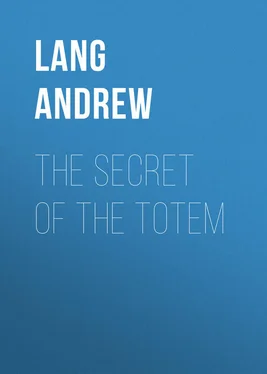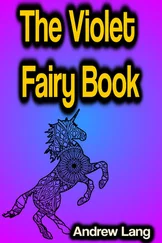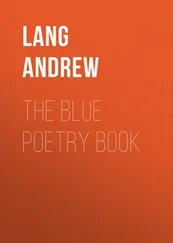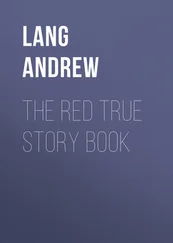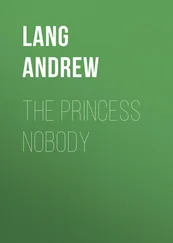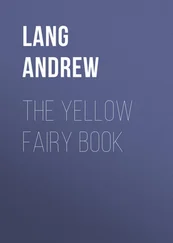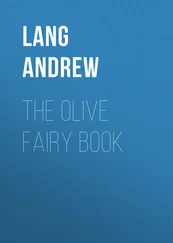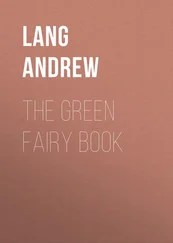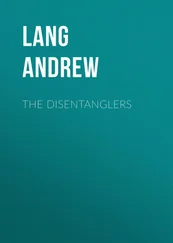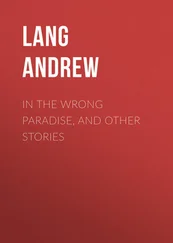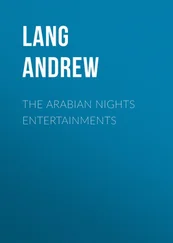Andrew Lang - The Secret of the Totem
Здесь есть возможность читать онлайн «Andrew Lang - The Secret of the Totem» — ознакомительный отрывок электронной книги совершенно бесплатно, а после прочтения отрывка купить полную версию. В некоторых случаях можно слушать аудио, скачать через торрент в формате fb2 и присутствует краткое содержание. Жанр: foreign_antique, foreign_prose, на английском языке. Описание произведения, (предисловие) а так же отзывы посетителей доступны на портале библиотеки ЛибКат.
- Название:The Secret of the Totem
- Автор:
- Жанр:
- Год:неизвестен
- ISBN:нет данных
- Рейтинг книги:4 / 5. Голосов: 1
-
Избранное:Добавить в избранное
- Отзывы:
-
Ваша оценка:
- 80
- 1
- 2
- 3
- 4
- 5
The Secret of the Totem: краткое содержание, описание и аннотация
Предлагаем к чтению аннотацию, описание, краткое содержание или предисловие (зависит от того, что написал сам автор книги «The Secret of the Totem»). Если вы не нашли необходимую информацию о книге — напишите в комментариях, мы постараемся отыскать её.
The Secret of the Totem — читать онлайн ознакомительный отрывок
Ниже представлен текст книги, разбитый по страницам. Система сохранения места последней прочитанной страницы, позволяет с удобством читать онлайн бесплатно книгу «The Secret of the Totem», без необходимости каждый раз заново искать на чём Вы остановились. Поставьте закладку, и сможете в любой момент перейти на страницу, на которой закончили чтение.
Интервал:
Закладка:
Meanwhile we are concerned rather with the way into totemism out of a prior non-totemic social condition, and with the development of the various stages of totemic society in Australia. The natives of that country, when unspoiled by European influences, are almost on one level as to material culture. Some tribes have rather better and more permanent shelters than others; some have less inadequate canoes than the rest; some drape themselves against cold weather in the skins of beasts, while others go bare; but all are non-agricultural hunting wanderers, without domesticated animals, without priests, and without chiefs on the level of those of the old Highland clans. They are ignorant of pottery, a fact which marks the very lowest culture; they know not the bow and arrow; their implements of stone vary from the polished "neolithic" to the rough-hewn "palæolithic" type: a man will use either sort as occasion serves.
While everyday life and its implements are thus rude, there are great varieties of social organisation, of ceremonial institutions, and of what, among Europeans, would be called speculative and religious ideas, expressing themselves in myths and rites.
Taking social organisation first, we begin with what all inquirers (except one or two who wrote before the recent great contributions to knowledge appeared) acknowledge to be the most pristine type extant Each tribe of this type is in two intermarrying divisions (which we call "exogamous moieties," or "phratries"), and each phratry bears a name which, when it can be translated, is, as a rule, that of an animal. 7 7 There are exceptions, or at least one exception is known to the rule of animal names for phratries, a point to which we shall return. Dr. Roth ( N.W. Central Queensland Aborigines , p. 56) suggests that the phratry names Wutaru and Pakuta mean One and Two (cf. p. 26). For Wutaru and Yungaru, however, interpretations indicating names of animals are given, diversely, by Mr. Bridgman and Mr. Chatfield, Kamilaroi and Kurnai , pp. 40, 41.
We shall show later why the meaning of the names has often been lost. Take the animal names of the phratries to be Emu and Kangaroo, no man of the Emu phratry may marry a woman of the same phratry, he must marry out of his phratry ("exogamy"); nor may a man of the Kangaroo phratry marry a woman of the same. Kangaroo phratry must marry into Emu, and Emu into Kangaroo. The phratry names in each case are, in the more primitive types of the organisation (which alone we are now considering) inherited from the mother. 8 8 That reckoning descent in the female line, among totemists , is earlier than reckoning in the male line, Mr. Howitt, Mr. Tylor, Dr. Durkheim, and Messrs. Spencer and Gillen, with Mr. J. G. Frazer, till recently, are agreed. Starcke says "usually the female line only appears in connection with the Kobong (totem) groups," and he holds the eccentric opinion that totems are relatively late, and that the tribes with none are the more primitive! ( The Primitive Family , p. 26, 1896.) This writer calls Mr. Howitt "a missionary."
A man of the Emu phratry marries a woman of the Kangaroo phratry, and to that phratry her children belong. Thus members of either phratry must be found in any casual knot or company of natives. Within each phratry there are, again, kinships also known by hereditary names of animals or plants. Thus, in Emu phratry, there may be kins called, say, Emu, Opossum, Wallaby, Grub, and others; in the Kangaroo phratry different names prevail, such as Kangaroos, Lizards, Dingoes, Cockatoos, and others. The name-giving animals, in this case, are called by us "totems," and the human kins which bear their names are called "totem kins." No man or woman may marry a person of his or her own totem. But this, in fact, as matters stand in Australia, puts no fresh bar on marriage, because (except in four or five tribes of the Centre) if a man marries out of his phratry he must necessarily marry out of his totem kin, since there are no members of his totem name in the phratry into which he must marry. In America, in cases where there are no phratries, and universally, where totems exist without phratries, marriage between persons of the same totem is forbidden.
The organisation of the more primitive tribes presents only the two exogamous moieties or phratries in each tribe and the totem kins in the phratries. We have Crow phratry and Eagle Hawk phratry, and, within Crow phratry, Crow totem kin, 9 9 That this is the case will be proved later; the fact has hitherto escaped observation.
with other totem kins; within Eagle Hawk phratry, Eagle Hawk totem kin, with other totem kins, which are never of the same names as those in Crow phratry.
This we call the primitive type, all the other organisations are the result of advances on and modifications of this organisation. It also occurs in America, 10 10 Frazer, Totemism , p. 6l. Morgan, Ancient Society , pp. 90, 94 et seq .
where, however, the phratry is seldom extant, though it does exist occasionally, and is known to have existed among the Iroquois and to have decayed.
On examining Mr. Howitt's map 11 11 Native Tribes of South-East Australia . Macmillan, 1904.
it will be seen that this type of social organisation extends, or has extended, from Mount Gambier, by the sea, in the extreme south, past Lake Eyre, to some distance beyond Cooper's Creek or the Barcoo River, and even across the Diamantina River in Queensland. But it is far from being the case that all tribes with this pristine organisation possess identical ceremonies and ideas. On the other hand, from the southern borders of Lake Eyre, northwards, the tribes of this social organisation have peculiar ceremonies, unknown in the south and east, but usual further north and west. They initiate young men with the rites of circumcision or subincision (a cruel process unknown outside of Australia), or with both. In the south-east the knocking out of a front tooth takes the place of these bloody ordeals. The Lake Eyre tribes, again, do not, like those south and east of them, hold by, and inculcate at the rites, "the belief as to the existence of a great supernatural anthropomorphic Being, by whom the ceremonies were first instituted, and who still communicates with mankind through the medicine men, his servants." 12 12 Native Tribes of South-East Australia , p. 640. For examples, pp. 528-535.
Their myths rather repose on the idea of beings previous to man, "the prototypes of, but more powerful in magic than the native tribes. These beings, if they did not create man, at least perfected him from some unformed and scarcely human creatures." 13 13 Ibid., p. 487.
Thus, the more northern tribes of primitive tribal organisation (say the Dieri and their congeners) have beliefs which might ripen into the Greek mythology of gods and Titans, while the faith of the tribes of the same social organisation, further south by east, might develop into a rude form of Hebrew monotheism, and the two myths may co-exist, and often do. The northern tribes about Lake Eyre, and the central and north tribes, work co-operative magic for the behoof of their totem animals, as part of the common food supply, a rite unknown to the south and east. They also practise a custom ( Pirrauru ) of allotting men and women, married or unmarried, as paramours to each other, after a symbolic ceremony. This arrangement also is unknown in the south and east, and even north by west, though almost everywhere there is sexual licence at certain ceremonial meetings. It is thus plain that the more northern tribes of the primitive organisation described, differ from their southern and eastern neighbours (i.) in their most important initiatory rites, (ii.) in some of their myths or beliefs, 14 14 That is, on our present information. It is very unusual for orthodox adhesion to one set of myths to prevail.
(iii.) in their totemic magic, and (iv.) in their allotment of permanent paramours. In the first three points these northern tribes of primitive type resemble, not the south-eastern tribes of the same social type, but the more socially advanced central, western, and northern "nations," with whom some of them are in touch and even intermarry. It is a dangerous fallacy to suppose that all tribes of the primitive tribal organisation are solidaires as to marriage, ceremonial rites, and beliefs.
Интервал:
Закладка:
Похожие книги на «The Secret of the Totem»
Представляем Вашему вниманию похожие книги на «The Secret of the Totem» списком для выбора. Мы отобрали схожую по названию и смыслу литературу в надежде предоставить читателям больше вариантов отыскать новые, интересные, ещё непрочитанные произведения.
Обсуждение, отзывы о книге «The Secret of the Totem» и просто собственные мнения читателей. Оставьте ваши комментарии, напишите, что Вы думаете о произведении, его смысле или главных героях. Укажите что конкретно понравилось, а что нет, и почему Вы так считаете.
